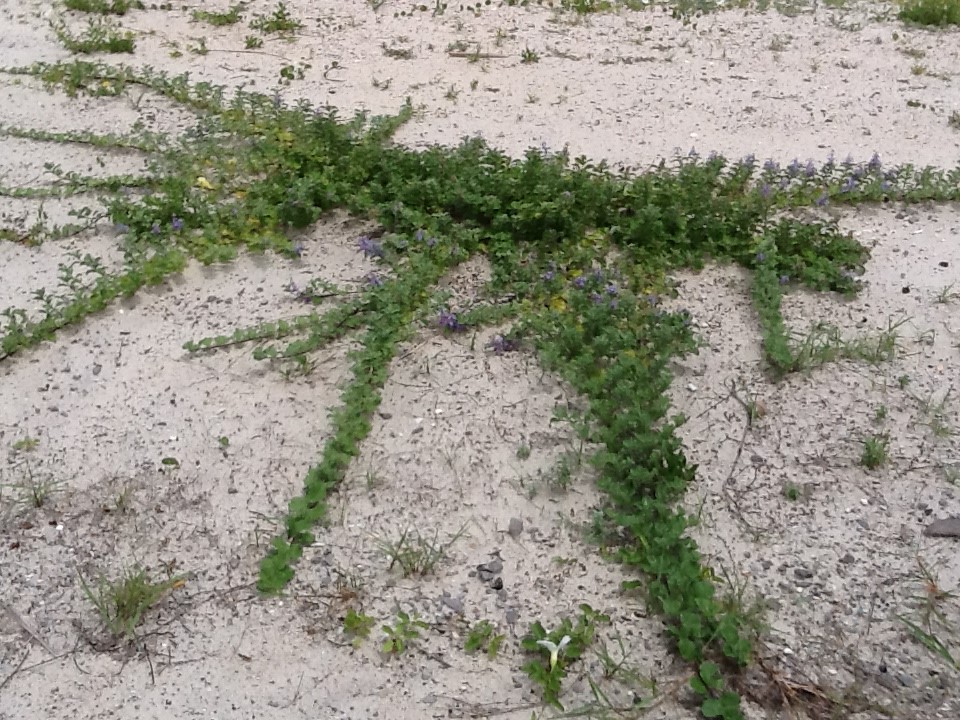During the spring and early summer beach vitex is not in seed and this is a good time to remove this invasive plant from your property. This time of year, the leaves have their unique blueish-green coloration, allowing them to stand out from other plants on your lawn, and soon will also have their lavender flowers. It will appear as a series of vines running across the surface of the sand extending from a central taproot.

To remove it you begin at the end of the vine away from this central point and slowly, carefully pull it from the sand, cutting it into two-foot sections to make it easier to bag. The vine may have smaller secondary roots extending from it that you have to carefully remove as well. If you are lucky, and the plant is relatively small, you may be able to pull all of the vines and the taproot with no tools. But if the plant is more established, the texture of the vine may become more woody and you will need to use loppers (or clippers) to remove it. The same is the case with the taproot, you may have to use a shovel to get it completely out. If you cannot remove all of the taproot, you may have to spray the remaining section with an herbicide. All cuttings should be double bagged before disposing to reduce the chance of spreading by fragmentation.
Beach vitex (Vitex rotundifolia) was brought to the United States from Asia in the 1950s as an ornamental plant. In the 1980s the states of North and South Carolina used in dune restoration where it exposed its invasiveness. The plant quickly spread, killing off native vegetation, such as sea oats, and forming dense monocultures on the dune. As the plant matures it becomes more of a woody shrub and much more difficult to remove. The shrub blocks sunlight not allowing the germination of other plants and the vines can extended onto the beach impacting sea turtle nesting. We are not sure at this time how it may impact the beach mice found in Florida.
We are not sure when it was first introduced to Pensacola Beach, but it was first found in 2014. Since then, Florida Sea Grant has been able to identify 2 sites in Gulf Breeze, 1 at Ft. Pickens, 24 in Naval Live Oaks, and 57 sites on Pensacola Beach where the plant exists (or did exist). One Pensacola Beach, 54 of the 57 sites are east of Casino Beach. 22 of the 57 sites are on public lands, and with permission from the Santa Rosa Island Authority, Florida Sea Grant uses local volunteers to manage those. However, 35 are on private property and we hope those homeowners will take the initiative to remove the plant to help stop its spread.
If you have questions on identification or methods of management, contact Rick O’Connor at the Escambia County Extension Office – roc1@ufl.edu, (850-475-5230 ext.1111).
Help us eradicate this plant from the island.
- St. Joe Red Tide Claiming Terrapins - December 15, 2025
- The 2025 Snake Watch Report for the Pensacola Bay Area - December 15, 2025
- Rattlesnakes on Our Barrier Islands; Part 2 – Prey Selection - December 15, 2025
